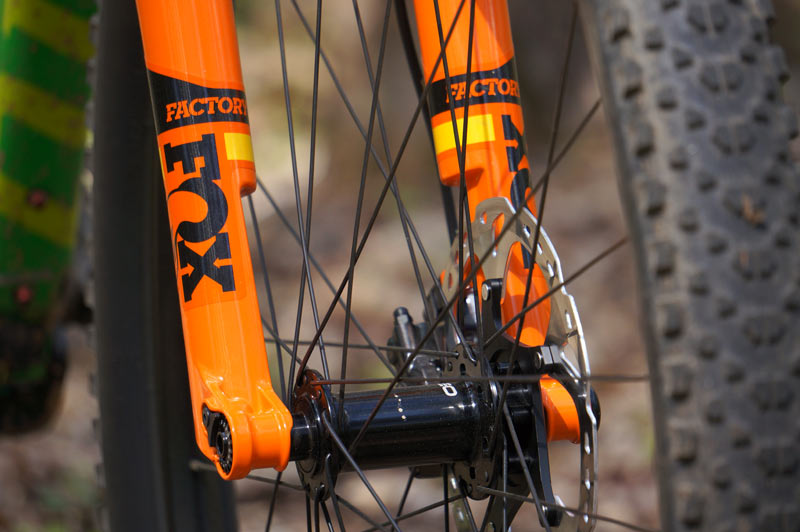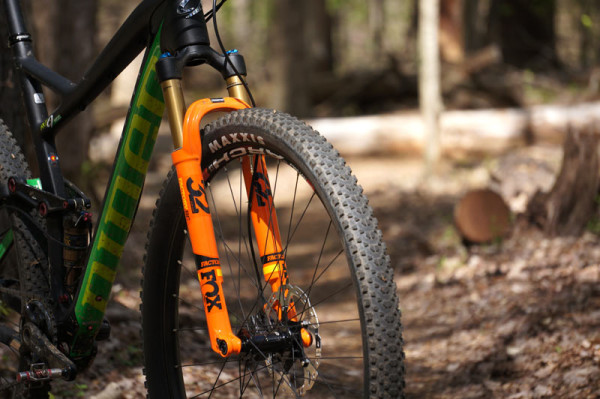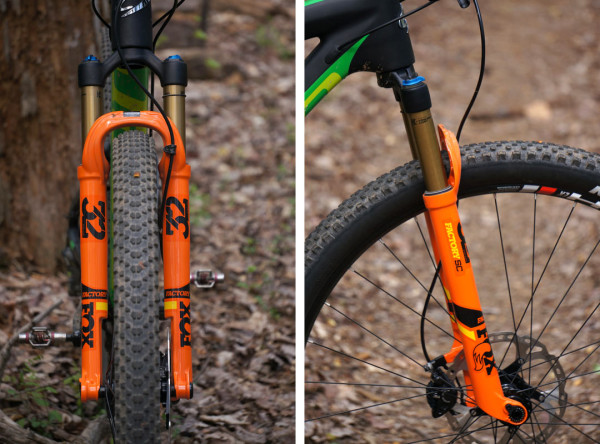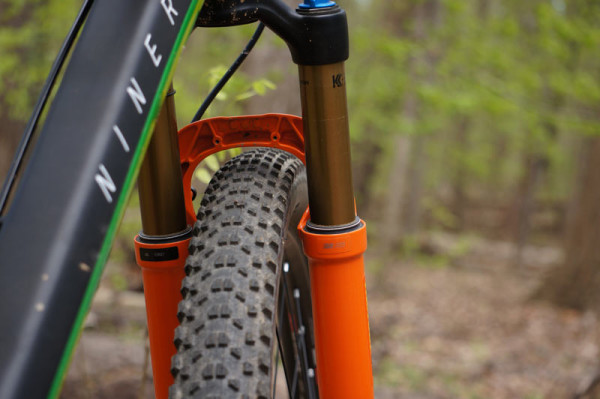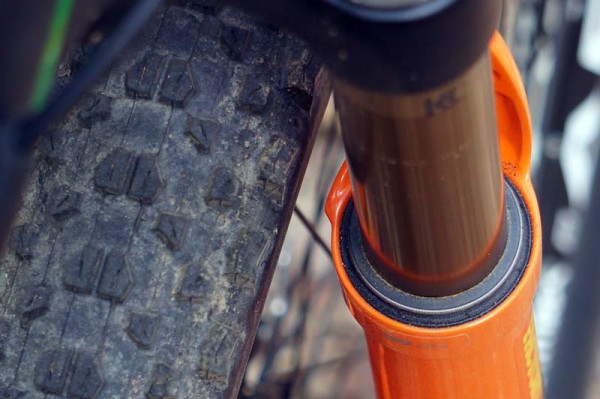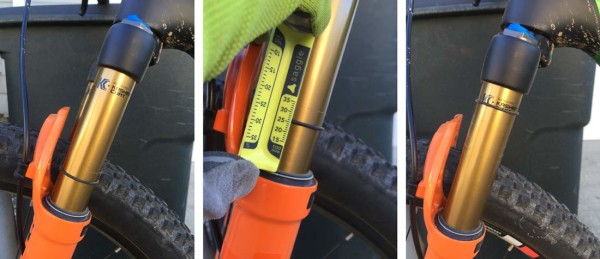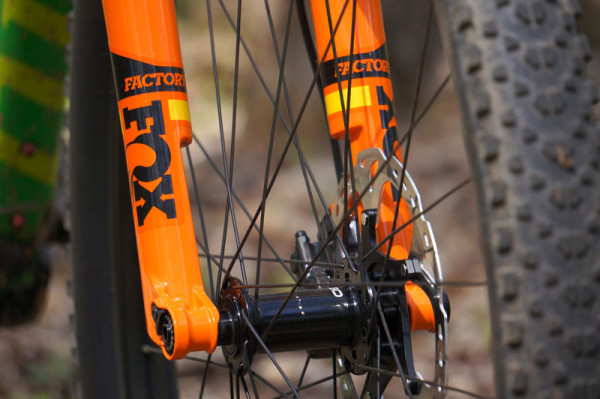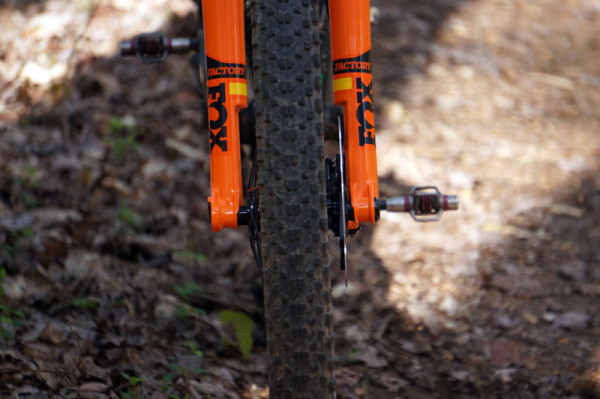The all-new 2017 Fox 32 SC landed in our office a couple weeks before it’s formal introduction, giving us a chance to log some miles on our local XC trails. Initially, I was simultaneously excited by the claimed weights, intrigued by the design and curious how stiff it would be.
The Step Cast design uses the same narrow crown for both standard (100mm) and Boost (110mm) axles, with only the lowers getting more or less of a stepped design to accommodate the different axle widths. We received the 29er Boost model, and it uses Boost’s benefits in a clever way to both save weight and provide a stiff overall wheel-and-fork package. With virtually every other fork brand using Boost’s extra 10mm of space from bottom to top to increase the size of tire that’ll fit, Fox did the opposite to decrease weight without giving up stiffness.
On top of that, the internals work wonders to tame the typical roots, rocks and moderate berms, dips and other features typically found on cross country race courses. As luck would have it, Niner’s Boost-spaced RKT9 arrived just about the same time…
First impressions would lead one to think the fork is going to be flexy. As we’ve gotten used to the visual heft of 34, 35 and 36 millimeter stanchions, these 32mm ones look anemic. And their skinny appearance is amplified by the narrow leg spacing. The fork just looks small.
Fortunately, you can’t completely judge the book by its cover. I eyeballed about a centimeter of aft flex at the axle under hard front braking, but that’s not abnormal for the category. The rest of the fork felt adequately stiff for its intended use. I could confidently dive into corners and berms, and it held its line around sweepers. The wheel went where I pointed it and I didn’t hear any brake rotor rub, suggesting minimal torsional or lateral flex. It’s hard to tell where the fork trails off and the Boost wheel’s wider spoke triangulation picks up, but the overall package is tight. (Fox sent an Easton wheel with the fork, but I’ve been testing it with the stock Stan’s Arch Boost wheel that came on the Niner)
The suspension performance felt dialed for XC. For the pros that like a stiffer fork, they’ll likely be running the iRD electronic remote version that eschews the additional 22 clicks of Open adjustment. For them, the lockout kept suspension bob to just a few millimeters when standing and sprinting. It would still compress smoothly (but very firmly) upon impact or if I bounced it hard, but for practical purposes it should be stiff enough for most racers.
For someone like me, however, who wants their suspension to soak up every little bump, the 32 SC also accommodated. I ran it wide open most of the time, and with the micro adjustment between half and full open. This way, I could ram into root sections at full speed and let the fork do the work. And work it did, surprisingly well for such a short travel item. I didn’t feel like I lost any speed, and very little of the impacts made their way to my hands. Setting it on Medium firmed it up enough to lose some tiny bump sensitivity, but it still worked its way through the roots/rocks without getting bouncy. I preferred the Open setting for most riding, though.
The 32 SC comes stock with two volume spacers installed and will hold up to four. I left the two starter spacers in place, set sag at about 27% and let her rip. That’s 75psi and I’m 190lb before getting dressed. Adding spacers (reducing air volume) typically increases a fork’s ramp rate. For a larger rider like me, that allows me to run lower air pressure so the fork remains supple over the small stuff, then have proper mid- and end-of-stroke support to prevent bottoming.
We have a few small drops and several g-out dips and this combination provided excellent small bump performance, mid-stroke support and kept me from bottoming out. The image on the left shows how close I got to ringing the fun-o-meter’s bell, which means there was a little safety cushion still in the bank.
There are about 12 clicks that provide a range from acceptably quick to uselessly slow. At the slightly slower than its halfway point, I felt the fork getting skipping a bit after a large hit leading into some roots, which created a slight loss of traction. After playing with a range of settings, I ended up at setting rebound damping three clicks from full open so it could recover from the rapid fire hits. It was fine at full open, too, but I liked it a bit better three clicks in. The knob itself is recessed far enough to make it difficult to turn with full finger gloves.
The Niner RKT9 came stock with a 180mm front rotor, so a 200mm rotor would likely get really close to the step’s upper edge.
After my first few rides, I’m impressed by Fox’s new XC fork. They pack a lot of performance into a small package that doesn’t give up practical performance in its quest to be one of the lightest damped suspension forks on the market. It’s not quite in the 988g German:A realm, but it has a proper oil-damped cartridge keeping it under control. Long term testing will take it to some more aggressive trails and see how it holds up over time.
